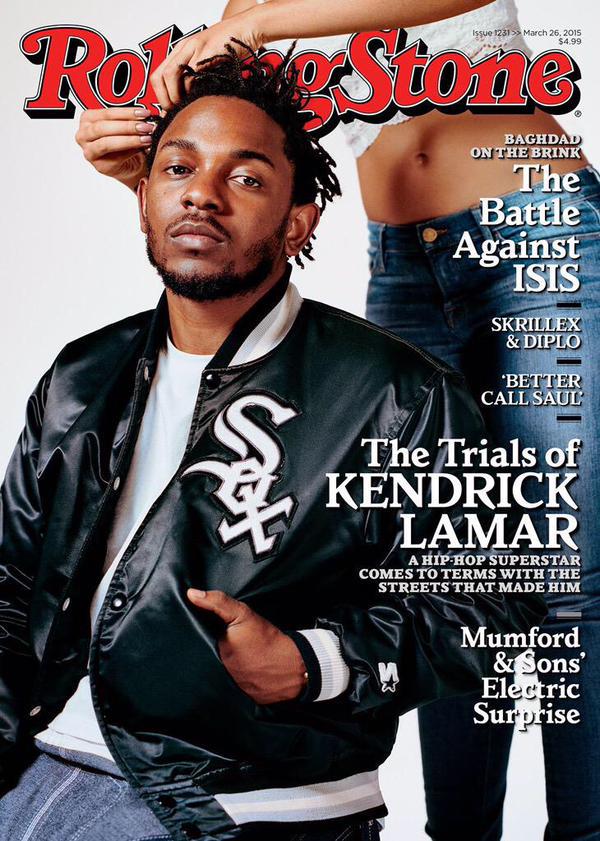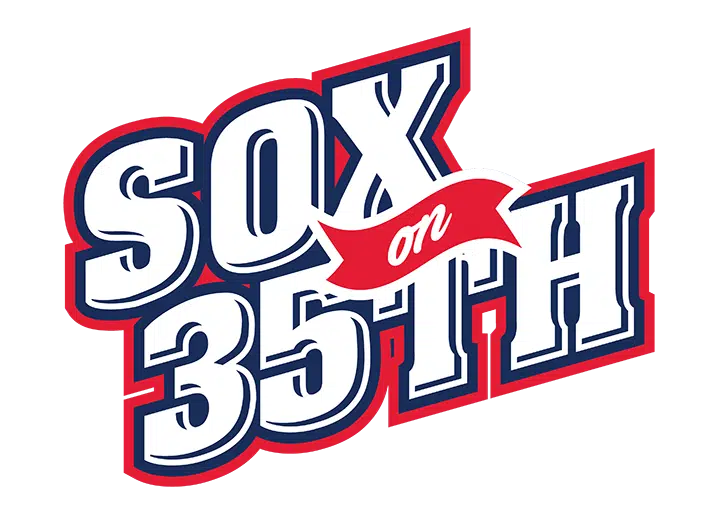In late 1992, Dr. Dre released a single to promote his debut album The Chronic. That single was “Nuthin’ but a ‘G’ Thang” featuring then up-and-coming rapper Snoop Dogg. The music video to promote the single is Dre and Snoop hanging out at a massive picnic. Thanks to the innovation of the art form by Dr. Dre himself, the introduction of Snoop Dogg’s laid-back flows, and heavy rotation on MTV, both the single itself and the music video have now become iconic. As such, so began the rise of the White Sox being intertwined with Hip Hop Culture.
As you can tell from the thumbnail of the video (or by watching the video itself), Dr. Dre wears the black White Sox hat with the diagonal “S-O-X” logo across the front throughout the music video.
This version of the White Sox logo, which the team still sports today as of this writing, was created in 1991, replacing the red, white, and blue “batter logo”. It’s a simple and clean look and was immediately embraced by West Coast Hip Hop Culture- most notably by Dr. Dre’s former group N.W.A. Despite the rap group famously being from South Central Los Angeles, N.W.A. embraced the new White Sox logo.

Despite N.W.A’s initial embrace, it was Dr. Dre specifically sporting the White Sox hat in the “Nothing But A ‘G’ Thang” music video that helped cement the Sox place in Hip Hop Culture. “‘G’ Thang” became a massive hit. It peaked at #2 on Billboard’s Top 100 (behind Snow’s “Informer”) and helped push rap further into the mainstream. And since the music industry is nothing but a copycat industry, Dr. Dre’s success led to other rappers feeling comfortable sporting the Sox. Not only was Dre able to convince his friend Tupac to support the South Siders…

But soon, other artists like Puff Daddy, Nas, Lil’ Wayne, Jay-Z, and Common would follow suit. Kendrick Lamar, whose parents are from Chicago, though he himself is from Compton, wore a White Sox jacket when he was featured on a 2015 cover of Rolling Stone magazine.

However, it was Dr. Dre and N.W.A. that were the true innovators and helped America get their own White Sox hat. According to a 2018 article by Shakeia Taylor on Fangraphs, at the end of 1990, the Chicago White Sox were 18th in product sales out of the then 26 teams in MLB. By August 1991, the White Sox were third, only behind the New Yankees and Oakland A’s.
Dr. Dre was a major player to help blend hip-hop and sports. As hip-hop artists started embracing sports, sports started embracing Hip Hop Culture. Not only did this shift occur in baseball – for example, Ken Griffey Jr. using Naughty by Nature’s “Hip Hop Hooray” as his walk-up music- but in other sports as well. The reason the early 1990’s Michigan basketball college team, colloquially known as The Fab Five, started wearing baggier uniforms was partially the result of Hip Hop Culture infiltrating its way into the sport. To pull a quote from a Bleacher Report article about the team:
Much of The Fab Five’s style and attitude intermingled with the increasingly popular hip-hop culture that was growing into the game. The young Wolverines had no problem acting true to their animated nature. J.A. Adande wrote for ESPN.com:
Their generation was the first generation to have hip-hop provide the soundtrack to their entire adolescence. You could hear EPMD booming in the Michigan locker room or see the players jump on the scorer’s table and wave their arms like in Naughty by Nature’s “Hip Hop Hooray” video after a victory.
While rap and hip hop became more mainstream in the early ’90s, its popularity would rise to the point where, as I write this article in 2022, it’s arguably the most popular musical art form, at least in America. As hip hop’s popularity grew, it became more enmeshed with other parts of American culture, especially sports. As such, I’m reminded of the 2016 episode of HBO’s Hard Knocks when rappers Kendrick Lamar and ScHoolboy Q visited the LA Rams training camp. You can see the rappers jealous of the ballers and the ballers jealous of the rappers. Now, hip hop and sports are one and the same.
Sports Culture and Hip Hop Culture have become almost synonymous. As Jay-Z raps in “Empire State of Mind”: “Catch me at the X with OG at a Yankees game/ S***, I made the Yankee hat more famous than a Yankee can.” While there’s a lot of truth in that statement, it was N.W.A. and Dr. Dre that made the White Sox hat more famous than the team itself could. The hat has become a representation of the band itself, so much so that there was a slight dust-up when the film Straight Outta Compton, a 2015 biopic chronicling the rise and eventual break up of N.W.A., when the Easy-E character anachronistically wore the White Sox hat in the film.
In 2017, Ice Cube, one of the members of N.W.A., stated that the main reason the band gravitated towards the black White Sox hat with the white “S-O-X” logo was mainly due to the color scheme. As Cube tells Kendall Gill, “Chicago changed their colors to black and white which was perfect for us – before I think they were red, white, and blue – and so that wouldn’t have worked for us. But when they changed it to black – plus the writing, we love South Central Los Angeles, we love Olde English style writing, so that had the Sox done style which was right up our alley. So – we rocked it because it was black.”
Despite Ice Cube admitting N.W.A. mainly wore the White Sox hat because of the color scheme, the attitude of the band affected how the White Sox team was viewed. As Sox fans, we’ll happily take N.W.A.’s style and swagger and imbue it as a part of our mentality. On the flip side, those who view the South Side of Chicago as a dangerous war zone filled with gangs and thugs used the group who famously stated F*** The Police as an emblematic representation of the team itself. While we Sox fans know those stereotypes are false, it doesn’t stop the negative perpetration from becoming the reality to many outsiders.
Hip Hop Culture and the White Sox are more than just the hat. Hip hop has sowed its roots into the organization and the flowers have started to blossom. Check out this article after the release of the awesome Southside City Connect jerseys in 2021:
According to the White Sox announcement, the design of the uniforms is intended to represent the hard-working nature of the South Side of Chicago and the identity of the team’s fan base. There are nods to Chicago architecture and the legacy of the team’s logo being involved in hip-hop culture.
“Every aspect of this collaboration is meant to connect with people who understand what the South Side represents. It’s not just about where our ballpark is located or where people from the city or suburbs live. It’s a mentality and a culture shared by many who love the White Sox,” White Sox vice president Brooks Boyer said in the announcement. “The Nike MLB City Connect Series created a rare opportunity to transform a concept for all people who understand what it means to represent the South Side into an on-field look and style. We are grateful to Nike, who helped us create a uniform that embodies the team’s historic legacy and connections to our fans and the mentality.” Emphasis added.
N.W.A. and Dr. Dre helped start the trend of bringing the White Sox into Hip Hop Culture, but 30+ years after making the hat famous, the integration between the team and the art form is still growing strong. As hip hop grew in popularity and started to become the dominant music genre that it is today, so did its influence on other aspects of American culture, like sports. Now, in 2022, the line has been blurred on where the White Sox swag begins and where Hip Hop Culture ends.
Featured Photo: White Sox (@whitesox) / Twitter

